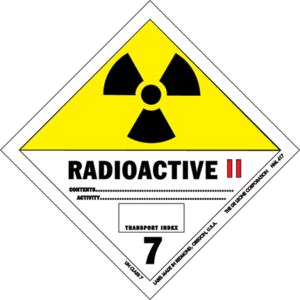IDEA
CAT Scanning
I'd like to build a CAT Scanner. It turns out that the software isn't that hard. The algorithm is quite simple. Here are some sample images that illustrate the process. Since I don't yet have the hardware to generate x-ray slices of an object I have synthesized what an x-ray would yield if it scanned an object. These scans are then reassembled to yield the original target image.
In a real CAT Scan system the 1 dimensional slices would be taken from the horizontal row of a series of x-rays. In this demo I don't yet have the x-rays to work with so I synthesize the 1D bands from the target image that I want to regenerate. So given a target image I generate a series of 1D radial slices by rotating the target image and then averaging all values in the rows of the image. Then I rotate the slice back to the original angle.
Slices are synthesized from a 180 degree rotation of the target image.
The target and four |  |  |
 |  |  |
Add (overlay) the four 1D radial sections together to get the CAT scan image at the right.
 +
+ +
+ +
+ =
= 
The resulting CAT scan is reminiscent of the target, but it is ambiguous. I found that you need at least 8 sections to get a recognizable image. The more sections you use the better. Here is a composite of 8 radial sections:


And finally, here is 32 radial sections. This seems to be a good number for an image this resolution:

This simple algorithm will work with very complex images. Given a photograph I synthesized 32 1-dimensional scans and then regenerated the photograph using the CAT algorithm.
A more complex example



The real world of x-rays is not so simple. In the experiments above, I actually synthesize the radial sections by averaging all the pixels in the rows. This roughly approximates how an x-ray reveals average density of a line through the target. But in the real world there can be materials inside the target that are so dense that they totally block x-ray energy. This reconstruction technique assumes that every part of a target is at least somewhat transparent. If there are parts of a target that are totally opaque even to x-rays then this will result in ambiguous, hidden sections. These hidden sections not only hide what is inside of them, but they also cause shadows that distort areas outside.
The following target is similar to the one used before except that it now has a screen added. The algorithm that synthesizes the radial sections was modified to treat any red are as totally opaque. The result is that anything inside the cup shaped screen is totally hidden. The dense area also throws off the contrast so that it is difficult to see the notch at the top of the target, but you can more or less make it out.


Image processing
The image that results from the composite of the 1D sections has very low contrast. It is simple to expand the dynamic range of the image, but also note that the contrast is weighted towards the center. This is because the radial sections favor the center of the image. The center of the target has the most overlapping sections so the pixels near the center contribute more signal to the average. It's difficult to apply a uniform contrast enhancement over the entire image because the result will leave the edges too dark or the center too light. What is needed is contrast enhancement that will be weighted based on the distance from the center of the image.
THIS IDEA IS IMPLEMENTABLE ALREADY WORK IS GOING ON IT
IT IS TAKEN FROM INTERNET
FROM
WWW.NOAH.ORG
Related articles by Zemanta
- Radiation and cancer (tomographyblog.com)
- Are CT scans faster, cheaper for diagnosing heart attacks? (ctv.ca)
- How dangerous is the radiation from a mammogram? (slate.com)

![Reblog this post [with Zemanta]](http://img.zemanta.com/reblog_e.png?x-id=dfb75e2e-5023-472a-b4d6-5a317eeca7e8)





![Reblog this post [with Zemanta]](http://img.zemanta.com/reblog_a.png?x-id=f6d3b245-1265-4564-8e7a-c263e0a3ad01)

